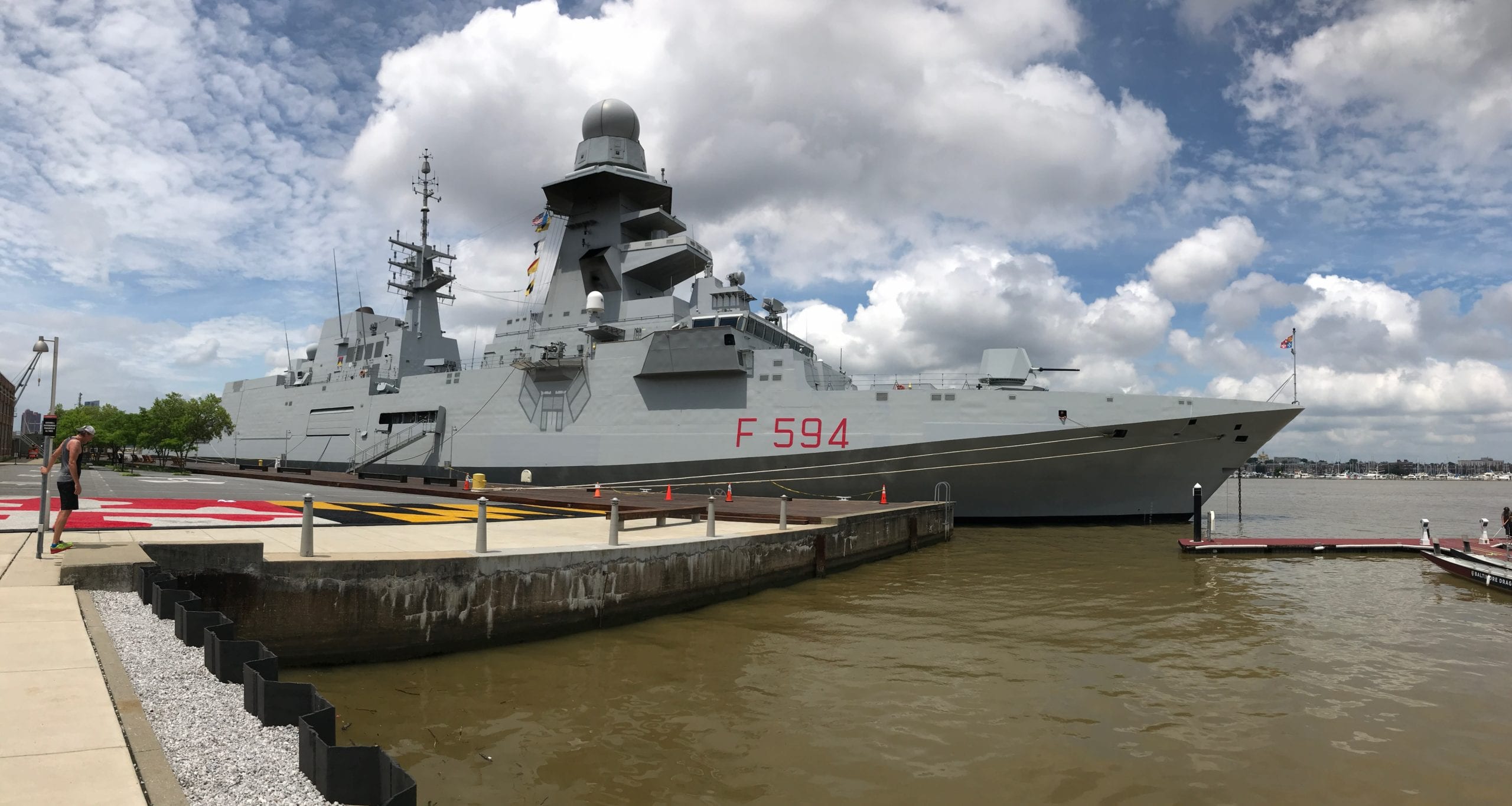[ad_1]
The Italian navy’s Alpino FREMM frigate.
Amanda Macias/CNBC
WASHINGTON — Italian shipbuilder Fincantieri Marine has been awarded $5.5 billion to develop the U.S. Navy’s newest class of warships.
The contract, announced last week, is for the design and construction of the lead frigate, with an option to buy nine more. If the U.S. Navy exercised all options on the contract, delivery of the 10th ship would be delivered in the mid-2030s.
The Pentagon estimated the first ship would cost $1.2 billion. The nine subsequent ships would cost up to approximately $781 million, in 2018 constant dollars, Navy officials said in a call with reporters.
An exterior view of the Italian warship Alpino.
Amanda Macias | CNBC
The Italian Fregata Europea Multi-Missione, or FREMM, is a multi-mission warship that was one of five contenders for the lucrative U.S. Navy contract.
In February 2018, the U.S. Navy awarded $15 million design contracts to Fincantieri Marine, General Dynamics Bath Iron Works, Huntington Ingalls, Austal, and Lockheed Martin. The competition slimmed to Fincantieri, Huntington Ingalls, Austal and a joint venture between General Dynamics and Spanish shipbuilder Navantia.
A look inside
CNBC spent a day aboard the Italian Navy’s Fincantieri-built Alpino warship in 2018 while the vessel toured the U.S. East Coast. The visit was organized to introduce the vessel to U.S. Navy leadership, sailors and lawmakers.
The tour began with a brief overview of the nearly 550-foot long vessel, its crew, capabilities and an espresso from one of several machines aboard the vessel.
An espresso aboard the Italian Alpino warship.
Amanda Macias | CNBC
“I showed my ship to some American sailors and they told me that this is the ship of the future. I had a hard time believing that because I come from a little Italian town and our navy is not as big as the United States Navy,” Mario Olivieri, an Italian sailor assigned to the FREMM Alpino, told CNBC aboard the vessel.
“So, I’m proud of my ship,” Olivieri said walking along the ship’s noticeably wide passageways.
A view of a passageway on the Italian frigate Alpino.
Amanda Macias/CNBC
The Italian warship, which would be modified to meet U.S. Navy specifications and requirements, is capable of conducting anti-submarine warfare, point-defense anti-air warfare, electronic warfare, anti-surface warfare and special operation insertion.
“It’s a proven design operating at sea with both the Italian and French navies. The French have taken it and have launched in combat,” a spokesperson for Fincantieri Marinette Marine told CNBC, referring to the 2018 retaliatory strikes in Syria.
The targeted strikes, carried out by the United States, United Kingdom and France, were aimed at destroying the Syrian regime’s chemical weapons infrastructure days after a suspected chemical attack by Syrian forces. On April 13, 2018, the French used one of its Fincantieri-built ships to successfully launch naval cruise missiles against a chemical weapons production site.
From the bridge of the ship, we are shown how the missiles were launched during the April strike. Fincantieri’s design is equipped with a 16-cell vertical launch system, or VLS, for holding and firing missiles.
A view of the Italian warship Alpino’s 16-cell vertical launch system where missiles are held and launched from.
Amanda Macias | CNBC
Other armaments include two Oto-Breda 76mm guns, two three-tube torpedo launchers positioned both port and starboard, two Oto-Breda 25mm machine guns and two NH-90 helicopters.
In terms of payload, the vessel can carry MU90 torpedoes, surface-to-air missiles, surface-to-surface missiles, anti-ship missile and anti-submarine missiles, and missiles on each of the helicopters.
The ship also carries a rigid-hull inflatable fast boat that can be deployed from a controlled door and ramp system. This feature is a crucial design element that can be used for special operations insertion missions.
A naval gun aboard the Italian navy warship Alpino.
Amanda Macias | CNBC
The U.S. Navy ships, according to the Pentagon contract, will be built at Fincantieri’s Marinette Marine shipyard in Marinette, Wisconsin, which currently makes the U.S. Navy’s Littoral Combat Ships.
“When we began this journey nearly two years ago it was with the belief that there was a place for new ideas, new platforms and new partners in an already talented U.S. shipbuilding industry,” Fincantieri Marine Group CEO Dario Deste said in a statement.
Reuters contributed to this report.
















